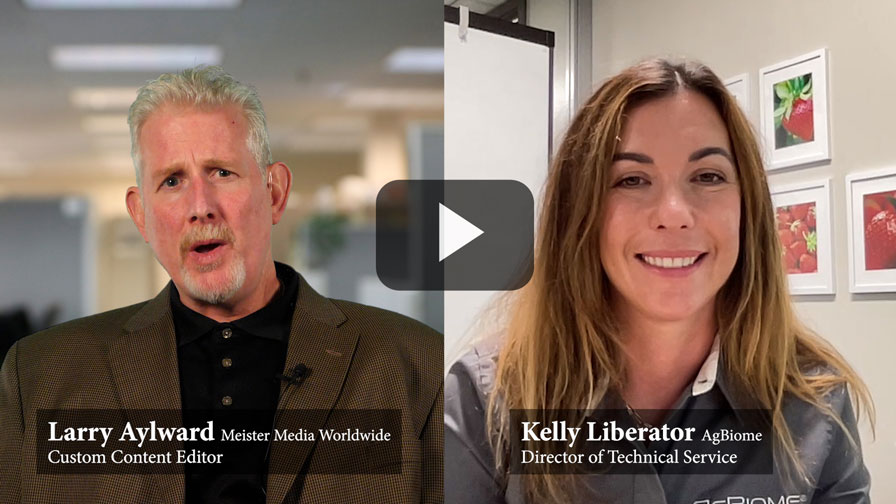Tips To Improve Grower And Winery Relationships
 There’s an old joke in the vineyard world that goes something like this:
There’s an old joke in the vineyard world that goes something like this:
Question: “What’s the biggest pest in the vineyard?”
Answer: “A winemaker.”
While it’s somewhat tongue-in-cheek, there is sometimes a hint of truth in it as well. In many cases (not all, certainly), the only communication a grower has with a winery purchasing his fruit are when they agree on how many tons of which varieties will be purchased, and just before harvest when deciding on when to pick the fruit. In some cases, winemakers will require that growers implement practices that have little to do with the quality of the crop. Like extra crop thinning because they read reviews from wine critics who are convinced that low yields always improve quality, or restricting certain spray materials at a random point in the season based on not much more than a gut feeling.
This is not to say growers are completely innocent of the charge of being an occasional thorn in a winemaker’s side, however. There are certainly things growers do from their end that frustrate winemakers too (e.g., “What do you mean you can’t take these extra 4 tons of grapes I put on the truck without telling you?”).
All of this is to say that, as we approach the beginning of another harvest, both growers and winemakers need to take responsibility for their business relationship so both parties better understand each other and benefit from that relationship. Here are just a few suggestions to help make that relationship work better.
■ Meet out in the vineyard during the season. The week before harvest should not be the first time that a winemaker steps into a vineyard where he is buying fruit. Mid-season discussions can help to deal with potential issues before the stress and chaos of harvest sets in. Discuss ways to manage a particularly vigorous block, for example, carrying a higher crop load to keep the vines in better balance and actually produce better fruit in the end. Or, what the expectations are regarding sprays closer to harvest in order to keep the fruit in good condition in the vineyard near the wooded edge where pest pressures are heavier in some years.
■ Be open to each others’ questions and concerns. Winemakers focus on making wine, and growers focus on growing the grapes. It’s hard for a winemaker to know the ins and outs of grape growing, and vice versa. Helping each other understand what is really important in order to meet your goals is critically important, so spend some time giving, and receiving, a little education.
■ Growers: Be the winery’s best supplier. In the end, the grower is a supplier for the winery, just like those that sell bottles, corks, labels, etc. As a grower, think about what makes you prefer a particular supplier over another — good communication, a reliable product, timely delivery of exactly what you expected. At some point, if you can’t deliver what they want, they’ll find someone else.
■ Each party has needs and expectations as part of a business relationship — be sure to spell those out before harvest kicks in. Take the time to listen to questions, and have conversations about how you can help address any issues they might have. It’s probably helpful to write those down ahead of time. Hey, that sounds like a contract. Bingo.
A Word on Contracts
Many growers and wineries, particularly in the East, rely on handshake agreements when it comes to grape purchases. While handshake agreements can certainly work, having a written understanding of what is expected of each other — a contract — can be valuable. A contract can clarify issues like tonnage, price, quality parameters, payment schedules, etc., all of which I have heard disputes arise over during and after harvest. Having a contract does not mean the two parties are in an adversarial relationship, nor does it mean that there is no flexibility regarding the contract’s terms should something need to change. Contracts allow both growers and wineries to decide on and spell out their business relationship, making sure that all of their needs are met.
Keep the pest management efforts focused on things like powdery mildew and grape berry moth. The winemaker (or the grape grower) should be a partner, not another pest you have to manage.
Resources For Winery/Grower Contracts
Contracts Between Wineries & Growers from Chris Lake, Director, Southern Oregon Wine Institute, Umpqua Community College
Sample Harvest Contract from Bruce Zoecklein, Assistant Professor and Enology Specialist Department of Food Science and Technology, Virginia Polytechnic Institute and State University
Be sure to consult your own legal representative before entering into any contractual obligations.









